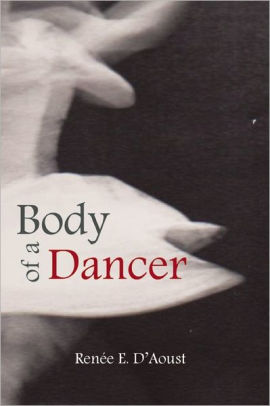Writing about
dance is not easy. Writing about dance in a memoir is probably even more
difficult and, when you find a cleverly written memoir which is also about leaving
dance as a profession, you face a book worth reading. Why is that? Because the tone used to talk about dance is too often mistic, romantic, passion-driven and absolute, as if without dancing one could not live. And one wonders, what about all those who at one point in their life decide or are kind of forced to leave the profession? What about them? What do they feel? What do they think? What do they do?
Renée E.
D’Aoust’s memoir is beautiful, ironic, sarcastic and
intense. She trained as a professional dancer in New York in the 1990s and, if at first sight this sounds a thrilling and exiting thing, once you take a closer look, you realise it is tough, precarious and nervous breaking.
I find the title
particularly apt as she highlights the way in which her body responded to
different dance techniques and to her life-changing decision to leave dancing.
D’Aoust’s first
love was ballet, so much so that when she left it to go and study dance in New
York, she left her identity and felt as if she had failed: “I did not have the
biology. My extension was not high enough. I had breasts. I would never be a
ballet dancer. I was nothing”.
In the Big Apple
she gained a scholarship to get into the Martha Graham School of Contemporary
Dance (a much wanted achievement) and her adventure began. It is entertaining and funny to read her view on
the technique, “the Graham contractions hollows out the abdomen so that it
looks like a sail filled with air. The spine is the webbing of the sail and the
legs are the ropes. I contracted” and on some of Graham’s famous statements,
“The body, Martha Graham says, never lies. My body lied all the time. (…) I
didn’t tell anyone I used to spend days in bed or on the floor, trying to get
my lower back to release various spasms”.
Her scholarship
only covered tuition fees so that she had to find a way to support herself.
And she did so by doing eight (yes eight!) different jobs, that included being a bathroom
attendant girl for a Catering Company and a Sunday employer at a Freudian
psychiatrist’s studio.
D’Aoust also vividly
introduces us into the life of her dance mates at the
Graham Centre. She speaks of Daniela, who concentrated so much on a
choreographic piece inspired by Stravinsky’s The Firebird that one day she
actually “stepped out of the window”, and of Mara, the goddess, “partly because
she had bodacious breasts, partly because she always had a new lover, partly
because she was from Argentina, but mostly because we adored her”.
As D’Aoust does not make it into the Graham Company, she leaves to find a job in other dance companies, taking classes at various studios where different choreographers taught as “you hoped someone noticed and asked you to dance with them”. Her description of auditions is particularly insightful. She danced, among others, for Mary Antony and Kevin Wynn. In particular, while working for the latter, she got to know Liz, also called Bruce Lee, because she was a tough and commanding dancer. A dancer who committed suicide: “In the end, Liz’s boyfriend, also a dancer, / found her in her loft apartment. / (…) Once he enfolded her body into his, the way they had practiced many times, there was nothing left to do but cry”. The way the author builds the narrative about Liz's talent and commitment up to the moment when she ended her life is moving and powerful. Suicides, she affirms, "is not always a cry for help (...). Sometimes it's an understandable release".
Dancers do not often speak their voice and clichés are then difficult to question. In this respect D'Aoust expresses her viewpoint frankly and, at times, remarkably well, dissolving clichés in the span of a few words.
After dancing for Wynn, her body "felt, complete somehow. Finished and complete. And not bitter at all". That is when she stops dancing. That is when the hard work to keep her body trained and fit starts to be used to do something else. That is when her life changes for good.
D’Aoust ends the
book with two dance-related episodes: when she goes to see the Graham
Company perform after she has left dancing and when she goes to pay a
visit to Isadora Duncan’s grave in Paris. In the first case, she extensively
talks about the dancers she danced with and their performance, interestingly calling
that chapter, “Dream of the Minotaur”, thus recalling Graham's labyrinth-inspired masterpiece "Errand into the Maze"; in the second, she poetically removes her sandals, taking some photographs of her
bare feet and draping her scarf over her right foot, as if to honour the revolution operated by the great bare-feeted dancer who tragically died strangled by her own scarf. No end could have been more perfect.

No comments:
Post a Comment